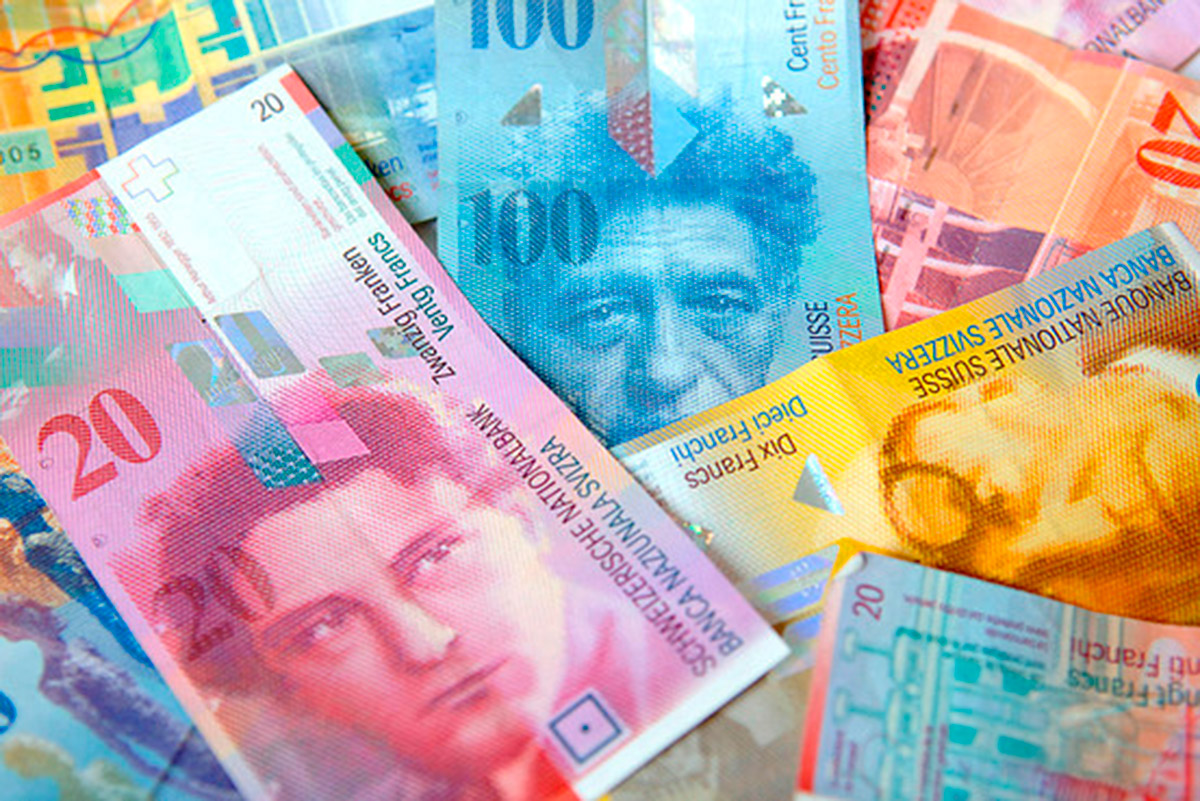Several years ago, the Euro Zone experienced a crippling blow to its economy when Greece was on the verge of a full-on economic collapse. During the crisis, Greece endured high unemployment, overly high structural deficits, and a dangerously elevated debt-to-GDP ratio. Though the Greek economy is slowly piecing itself back together, especially with a new governmental structure in place, the Euro Zone has recently been plagued by another pressing issue: the Swiss National Bank (SNB) scrapped its three-year-long peg of the Swiss Franc to the Euro. The decision sent a shockwave of panic throughout the Euro Zone community and thousands of investors around the world lost money. The Franc, which had once been deemed a “safe-haven” investment due to the country’s booming export culture and minimal inflation, is quickly falling behind other benchmark currencies. Though the SNB believes the move was necessary in order to stabilize the Swiss economy, economic analysts and financial professionals firmly disagree — they view the initiative as a costly error that might trigger a domino effect among other major world currencies. Therefore, the following questions still remain: will other euro-pegged countries like Denmark share the same fate, and will Switzerland’s economy recover soon?
The initial decision by the Swiss National Bank to peg or cap the Swiss Franc came in September of 2011. During this time, the franc appeared to be closing in on parity with the Euro and economists feared that the Franc would continue to appreciate in the future. Given these circumstances, the SNB established a minimum exchange rate of 1.20 francs per euro, a move that warranted against a growing fear of the “franc being a threat to the economy” due to deflation and other economic risks.[1] Another reason that prompted the SNB to discard the peg included the depreciation of the euro, which led the Swiss franc to become weaker compared to the US dollar. Essentially, the franc was now out of its “exceptional overvaluation” phase when the peg had first been introduced. In more simple and practical terms, the pegging decision enabled the SNB to closely follow and commit to the European Central Bank (ECB) system. Such a concerted effort added a sense of stability to the Swiss economy, hence becoming a “safe haven” for investors, and ultimately prevented Switzerland from becoming a part of the wide-reaching Eurozone crisis.
Yet, even as the decision by the Swiss National Bank proved to be a short-term fix to deflationary development, the move baffled financial institutions around the world. In particular, the decision stunned currency traders as the Swiss Franc soared when other currencies, notably the US Dollar and Euro, depreciated greatly.[2] This causality in turn led to a sudden drop in stock volume and value for Switzerland. Also, many feared that a so-called “battle in currency wars” would ensue due to the unpredictable implications of the pegging move. What’s more, the immediate impact of the declining Franc value had more or less caught the financial world off-guard. Jeremy Cook, chief economist at currency brokerage firm World First, stated the following in regards to this viewpoint: “That was the single largest foreign exchange move I have ever seen…The Swiss franc has lost close on 9% in the past 15 minutes. This dwarfs moves seen post-Lehman brothers and other geo-political events in the past decade.”[3] For many economists like Cook, the brisk aftermath of the decision instilled both fear and uncertainty for Switzerland and the surrounding Euro Zone.
The concept behind currency pegging has been around for decades and several countries have adopted the economic strategy. A prime example is that of Denmark, a country that has a long history of currency pegging and economic stability. Back in 1982, Denmark established a currency peg with Germany in order to benefit from the country’s rising economic stature and secure trading relations.[4] As the euro became the currency of the Eurozone in later years, the peg eventually shifted to a krone-euro relationship. In retrospect, Denmark’s experience with currency pegging has paid off due to a high standard of living, low government debt, and a healthy economy. History has shown, however, that a variety of factors can render currency pegging detrimental to any functioning economy. Just as the franc experienced economic trouble, the euro-krone peg too is beginning to experience instability. According to financial experts, Denmark is the only country with a formal peg to the euro ever since Switzerland abandoned its currency peg a few months ago.[5]
The Danish peg has recently come under scrutiny after it devalued following the European Central Bank’s extensive bond-buying program in January.[6] This move led investors to believe that Denmark is inching closer to a possible abandonment of its currency peg to the euro. Though some fear of unpegging remains, Denmark’s central bank insists that the krone-euro peg is healthy and destined to continue in the future. Lars Rohde, governor of the Danish central bank, made the following clear to critics: “We are able and we are willing to do whatever it takes to defend the peg. The peg is the cornerstone of economic policy in Denmark and has very broad based support.”[7] Rohde, along with other faithful supporters of the currency peg, additionally argue that the Swiss franc predicament is a totally different situation in terms of scope and outcome. The Swedish Central Bank maintains that the Swiss peg represented a “ceiling” more than anything else and that the economic move was never intended to last forever. Clearly, though financial tension between the ECB and Danish government is evident, a domino effect from the Swiss Bank’s ill-fated decision is very unlikely.
Now that the Swiss peg has been scrapped for a few months, the following case still remains: will the Swiss economy prosper in the future, or will it continue to worsen? Despite the heartache attached to the Swiss National Bank’s decision to leave behind the franc-euro peg, the Swiss economy is faring considerably well at the moment. Compared to extremely low prices at the time of the peg scrap, the Swiss franc is now valued higher than the euro. To put this into perspective, the franc advanced 1.4 percent to 1.0433 per euro in London, and touched 1.0422 per euro, the strongest level since early February.[8] Because of recent growth, the SNB decided to not increase negative deposit rates, a sign that the Swiss economy is leveling out once again. Even more encouraging is the fact that such growth is expected to increase even more in the coming months. Overall, while the Swiss economy isn’t fully restored per se, but the currency exchange rate is definitely advancing in the right direction.
Now that several months have passed since the SNB renounced the franc-euro peg, several conclusions can be drawn regarding the inner workings of monetary policy and the global economy. In retrospect, countries like Denmark and Switzerland adopted currency pegs to safeguard national currency from external economic influences. In theory, currency pegging is very effective and a successful peg will yield positive trading relationships, controlled inflation, and tempered interest rates for those countries involved. Yet, as the Swiss franc-euro case has proven, not every currency peg is destined to last in today’s complex economic environment. Due to rapid appreciation of the Swiss franc, fear of deflation, and a host of other economic risks, the Swiss franc-euro peg ultimately dissolved, as the Swiss National Bank tried to stabilize the Swiss economy. As a result of this measure, a temporary shockwave was sent throughout the European economy and investors everywhere incurred major financial losses. Though countries like Denmark have followed in Switzerland’s footsteps and adopted a currency peg, it is quite improbable that a similar scenario will occur. The Danish government is fully committed to maintaining its currency peg and the economic move has helped the country prosper immensely. All things considered, the Swiss economy is steadily recovering from the currency peg and the Swiss franc is once again on track to become a safe haven investment in the future.
[1] Wearden, Graeme. “Swiss Bid to Peg ‘safe Haven’ Franc to the Euro Stuns Currency Traders.” The Guardian. 6 Sept. 2011. Web. 2 Apr. 2015. <http://www.theguardian.com/business/2011/sep/06/switzerland-pegs-swiss-franc-euro>.
[2] Wearden, Graeme. “Swiss Bid to Peg ‘safe Haven’ Franc to the Euro Stuns Currency Traders.” The Guardian. 6 Sept. 2011. Web. 2 Apr. 2015. <http://www.theguardian.com/business/2011/sep/06/switzerland-pegs-swiss-franc-euro>.
[3] Wearden, Graeme. “Swiss Bid to Peg ‘safe Haven’ Franc to the Euro Stuns Currency Traders.” The Guardian. 6 Sept. 2011. Web. 2 Apr. 2015. <http://www.theguardian.com/business/2011/sep/06/switzerland-pegs-swiss-franc-euro>.
[4] Jolly, David. “Concern in Denmark as Its Currency’s Peg to the Euro Is Strained.” The New York Times. The New York Times, 13 Feb. 2015. Web. 2 Apr. 2015. <http://www.nytimes.com/2015/02/13/business/international/concern-in-denmark-as-its-currencys-peg-to-the-euro-is-strained.html?_r=0>.
[5] Milne, Richard. “Danish Central Bank Fiercely Defends Currency Peg – FT.com.” Financial Times. 6 Feb. 2015. Web. 2 Apr. 2015. <http://www.ft.com/cms/s/0/d3c385f6-adc6-11e4-919e-00144feab7de.html#axzz3WBUYmJiX>.
[6] Hannon, Paul. “Danish Central Banker Pledges to Defend Currency Peg–Update.” Capital.gr. 12 Mar. 2015. Web. 2 Apr. 2015. <http://english.capital.gr/News.asp?id=2253418>.
[7] Hannon, Paul. “Danish Central Banker Pledges to Defend Currency Peg–Update.” Capital.gr. 12 Mar. 2015. Web. 2 Apr. 2015. <http://english.capital.gr/News.asp?id=2253418>.
[8] Goodman, David. “Swiss Franc Jumps Most Versus Euro Since Cap Scrapped in January.”Bloomberg.com. Bloomberg, 24 Mar. 2015. Web. 2 Apr. 2015. <http://www.bloomberg.com/news/articles/2015-03-24/swiss-franc-jumps-most-versus-euro-since-cap-scrapped-in-january>.


